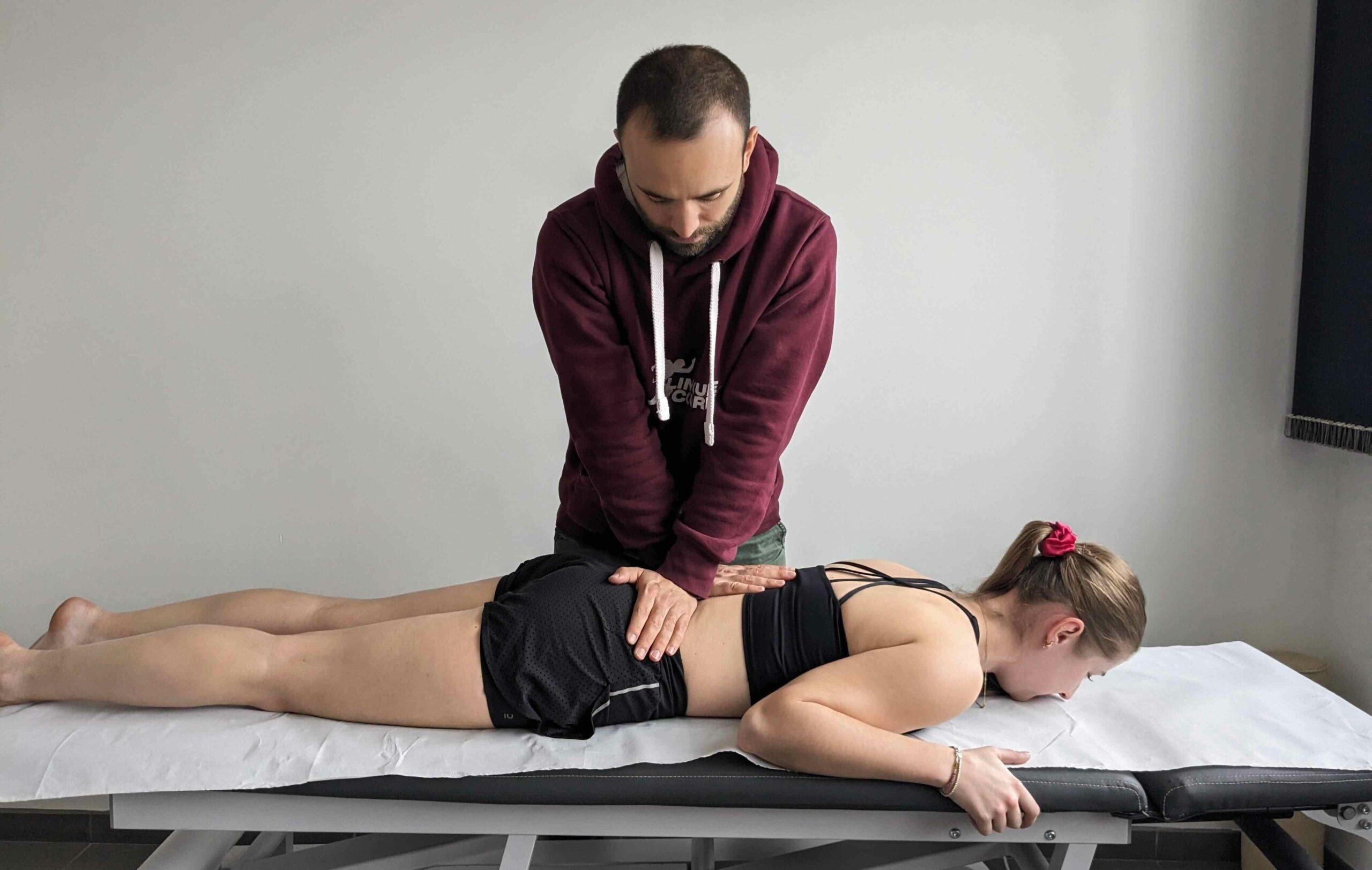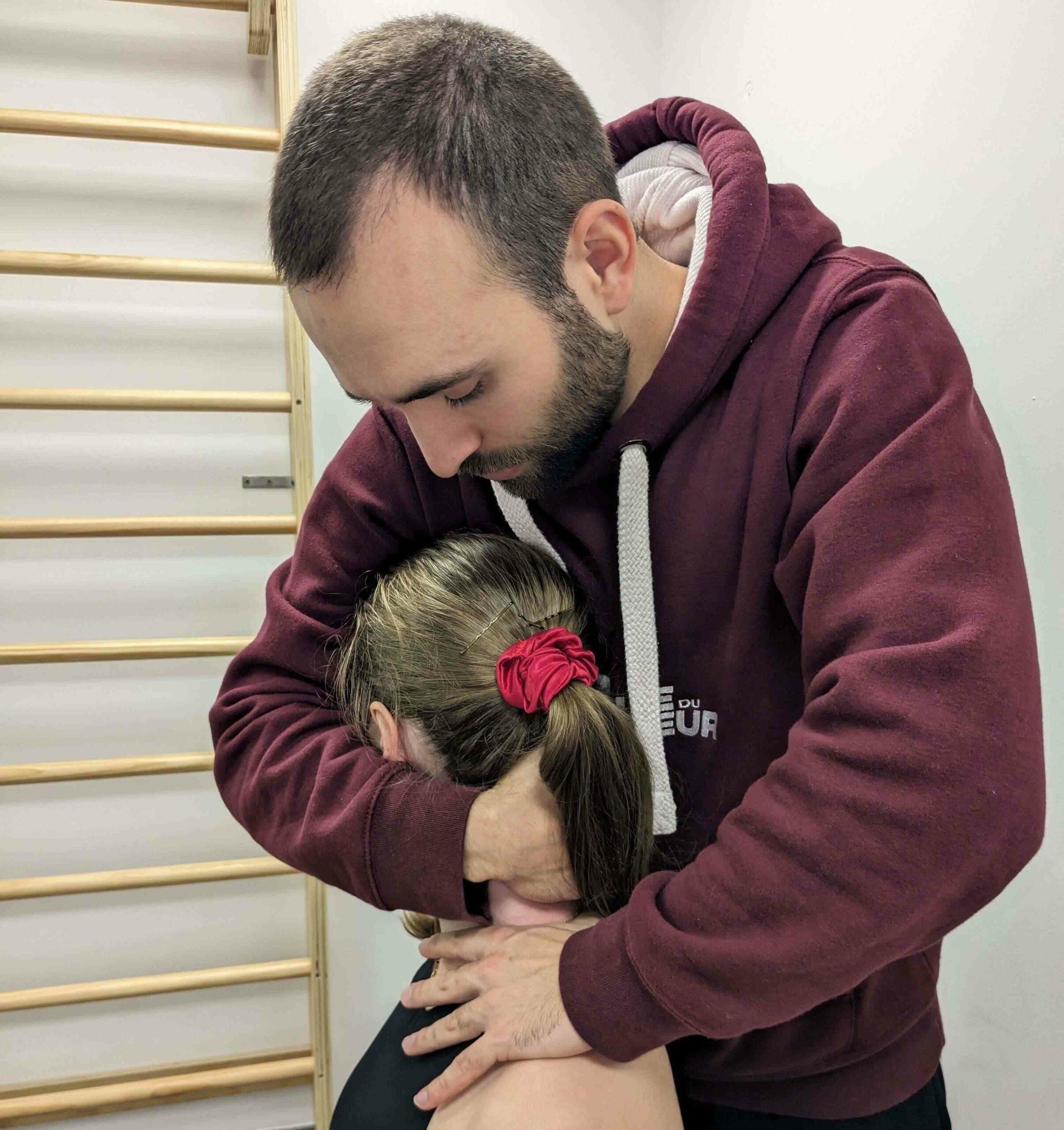The McKenzie ® method
MDT (Mechanical Diagnosis and Therapy – McKenzie ® Method) is a method for assessing and treating musculoskeletal disorders. Internationally recognized by many healthcare practitioners, it was developed by New Zealand physiotherapist Robin McKenzie. It has been used in many countries for over 40 years.
Among the more than 25,000 physiotherapists working in Belgium, I am one of 115 practitioners trained and certified in MDT-McKenzie. I’m also one of 344 physiotherapists certified and affiliated with the Association Francophone McKenzie.

What are the specific skills of a McKenzie ®-certified physiotherapist?
Practitioners trained in MDT are able to assess and make a mechanical diagnosis in every region of the musculoskeletal system. So when a problem exists in the spine, joint, limb or muscle, an MDT assessment can be performed.
The strength of MDT lies in the principle of self-treatment and patient autonomy. What’s more, the method has been the subject of numerous scientific studies, giving it a very solid foundation.
The initial assessment is a key stage in the MDT process. Using valid and reliable tests, it enables an accurate diagnosis to be made most of the time, followed by an appropriate treatment plan. This assessment often avoids the need for costly tests such as MRIs. MDT-certified practitioners are able to quickly determine, for each patient, whether the method is indicated for them. If it is not, the examination provides very useful information for directing the patient to the right specialist or to the most appropriate test.
All in all, MDT is a comprehensive approach which, when carried out by trained professionals, proves very useful in the majority of cases, as numerous scientific studies attest.
What are stages of MDT (McKenzie ®) ?
Step 1 : Assessment
To begin the assessment, the practitioner will take a detailed history of your symptoms, and how they occur and are affected by your daily activities. You will then be asked to perform certain movements or hold certain positions. One of the most specific steps of the MDT examination is to have you repeat these movements in a very precise way, going to the end of amplitude. The way your symptoms and joint amplitudes evolve with the repetition of movements provides the practitioner with essential information on the nature of your complaints.
Step 2 : Classification
All classifications have precise, mutually exclusive clinical definitions to enable easy identification. During clinical tests, questioning and the patient’s symptomatic response enable each syndrome to be identified according to its specific features. MDT offers a comprehensive classification system. The “OTHER” group is by nature heterogeneous, and includes various sub-groups such as serious pathologies (cancer, fractures, etc.), all non-mechanical pathologies (e.g. ankylosing spondylitis), persistent pain syndromes (in which the mechanical problem is no longer predominant), and so on.
Step 3 : Management/Treatment
Based on the information obtained during the assessment, the MDT-trained practitioner will draw up a specific exercise protocol. These exercises will help to reduce, then abolish, the pain being treated, so that joint amplitudes can be restored. Your practitioner will also show you precisely which postures to adopt, and which to avoid temporarily. If the problem is a little more complex, the practitioner will sometimes use manual therapy techniques to complement the exercises.
However, self-treatment at home will remain the most important part of the healing process: an exercise that you can do yourself 5 or 6 times a day is more likely to bring rapid results than a treatment administered by a clinician 1, 2 or even 3 times a week. In this approach, effectiveness depends on the involvement of the patient, who becomes the main actor in his or her own healing. Experiencing pain relief for oneself, right from the start of treatment, helps to regain confidence in one’s ability to self-manage one’s body in the medium and long term. Most patients can successfully self-treat, provided they have the knowledge and tools to do so.
Stage 4 : Prevention
Learning to “self-treat” during the current episode of pain provides the skills to minimize the risk of recurrence. It also enables any recurrences to be managed early and quickly, safely and effectively. The aim of this approach is to give you back control of your body, and help you regain confidence in it. In the case of persistent or recurrent pain, self-management is far more effective than passive care.
Is MDT right for me ?
Self-assessment for spinal pain :
Are there moments during the day when you feel no pain? Even for just 10 minutes?
Does your pain radiate no further than the knee for lower back pain, or the elbow for neck pain?
Have you had more than one episode of back or neck pain in recent months or years?
Is your pain aggravated during or immediately after prolonged bending or stooping: e.g. while making your bed, vacuuming, gardening, doing earthworks, etc.?
Are your symptoms triggered or aggravated by prolonged sitting or standing up: for example, after watching television, or after working at a computer for a long time?
Is your pain associated with a particular activity? That is, is your pain generally absent before starting this activity?
Do you feel worse when you’re inactive and better when you’re active?
Is there less pain in your lower back when you lie on your stomach? (If the pain is worse for a minute or two, but then gets better, the answer to the question is yes).
Does your lower back feel better when you walk?
If you answered yes to more than 4 questions, your chances of benefiting from the McKenzie Method are very good. You can directly test its effectiveness by following the self-treatment protocol described in the McKenzie reference booklets. If you answered yes to 3 or fewer questions, this could still be the case, but it would be best to consult a practitioner trained in the McKenzie Method for a more precise assessment.
If you suffer from any of the following ailments :
Sciatic pain, cruralgia or cervicobrachial neuralgia;
Rheumatic pain of the hip, lower limbs, shoulders or upper limbs;
Pain that starts in the back or neck and seems to radiate to the buttocks or shoulders;
Intermittent tingling or pins and needles in the feet or hands;
Persistent elbow or knee pain for which no treatment has had a positive effect.
It’s in your best interest to be assessed by a practitioner trained in the MDT method (McKenzie method). They are trained to safely assess and diagnose all areas of the musculoskeletal system.

What are the benefits (also known as the McKenzie method) for patients ?
Most patients who respond positively to MDT can manage their own problems in the medium and long term. As a result, they become self-reliant and no longer need the help of a therapist.
At the same time, patients who follow recommended strategies experience far less pain and persistent functional limitations.
They become the main players in their body’s mechanical management.
In short, many patients benefit from :
Reduce pain and joint blockages,
Maintain their pain- and blockage-free status by adopting good posture and self-treatment exercises,
Recover full function,
Prevent recurrences.
Is the McKenzie Method (MDT) only applicable to neck, back or lumbar spine pain?
No, the McKenzie approach is also very often useful in the assessment and treatment of muscles, tendons and joint pain of the upper or lower limb (hip, knee, ankle, shoulder, elbow, wrist etc.).
References :
https://fr.mckenzieinstitute.org/patients/qu%E2%80%99est-ce-que-le-mdt/
https://fr.mckenzieinstitute.org/linstitut/faq/
 info@hugokine.com
info@hugokine.com +32 4 73 95 42 83
+32 4 73 95 42 83